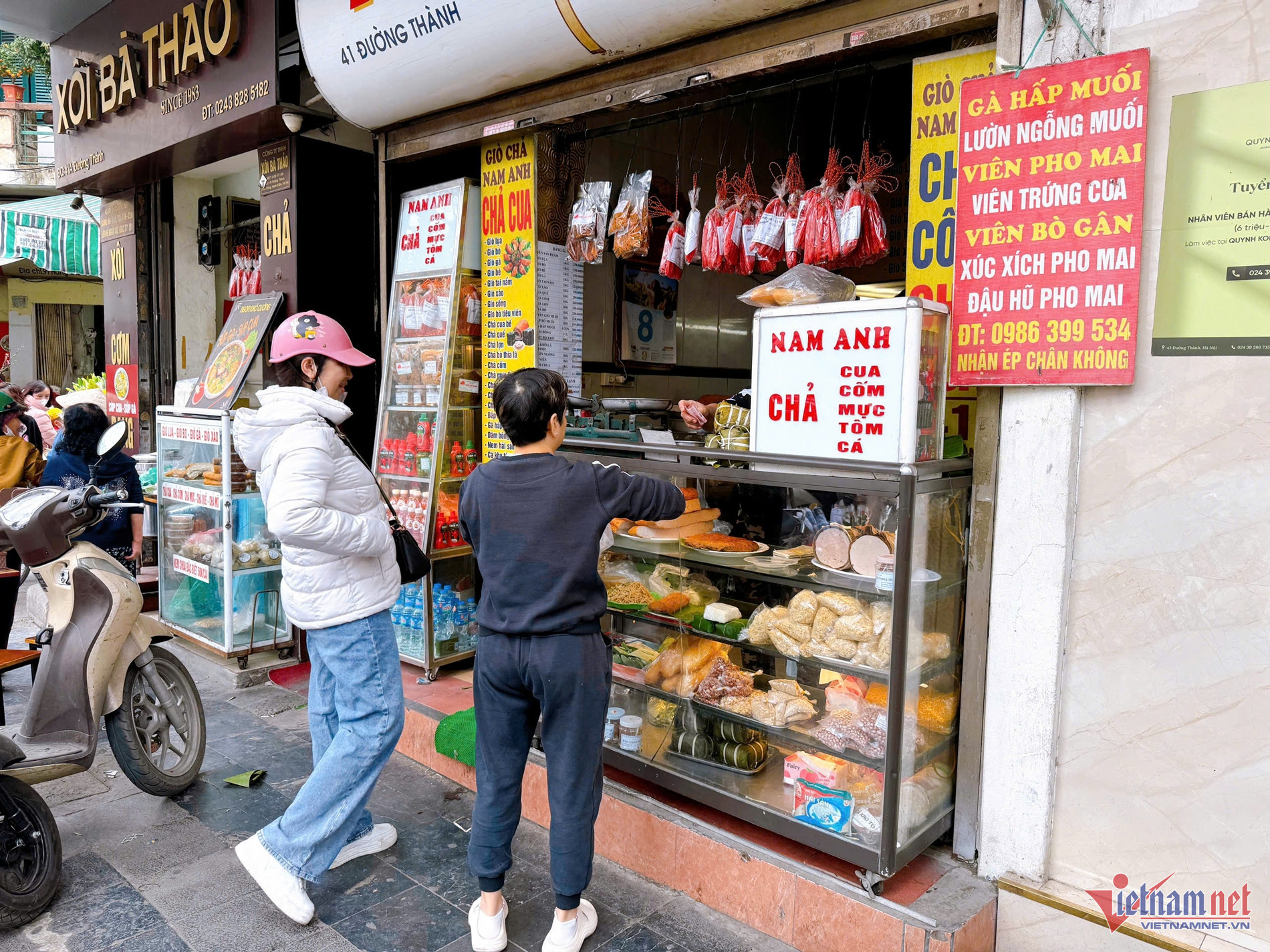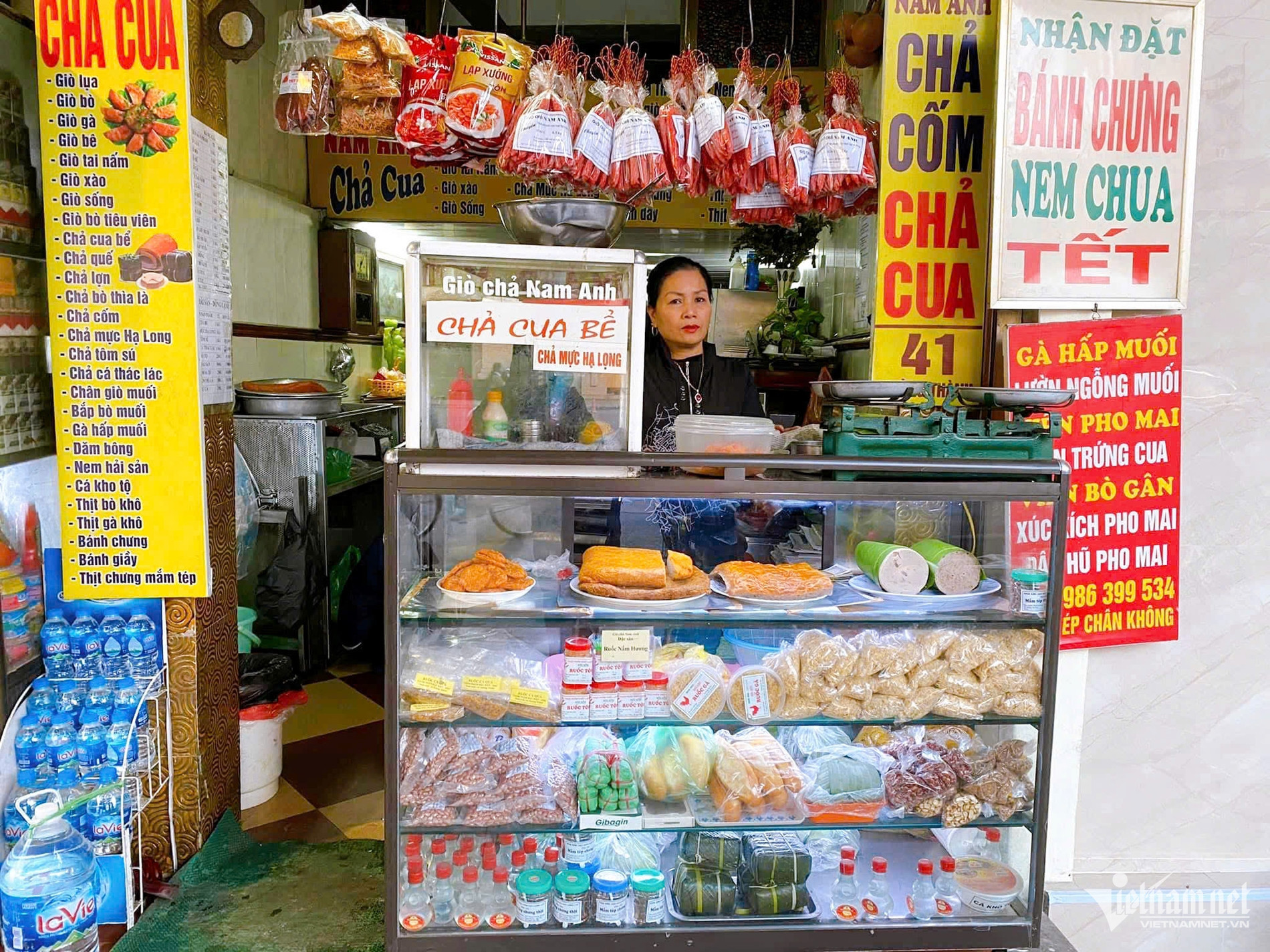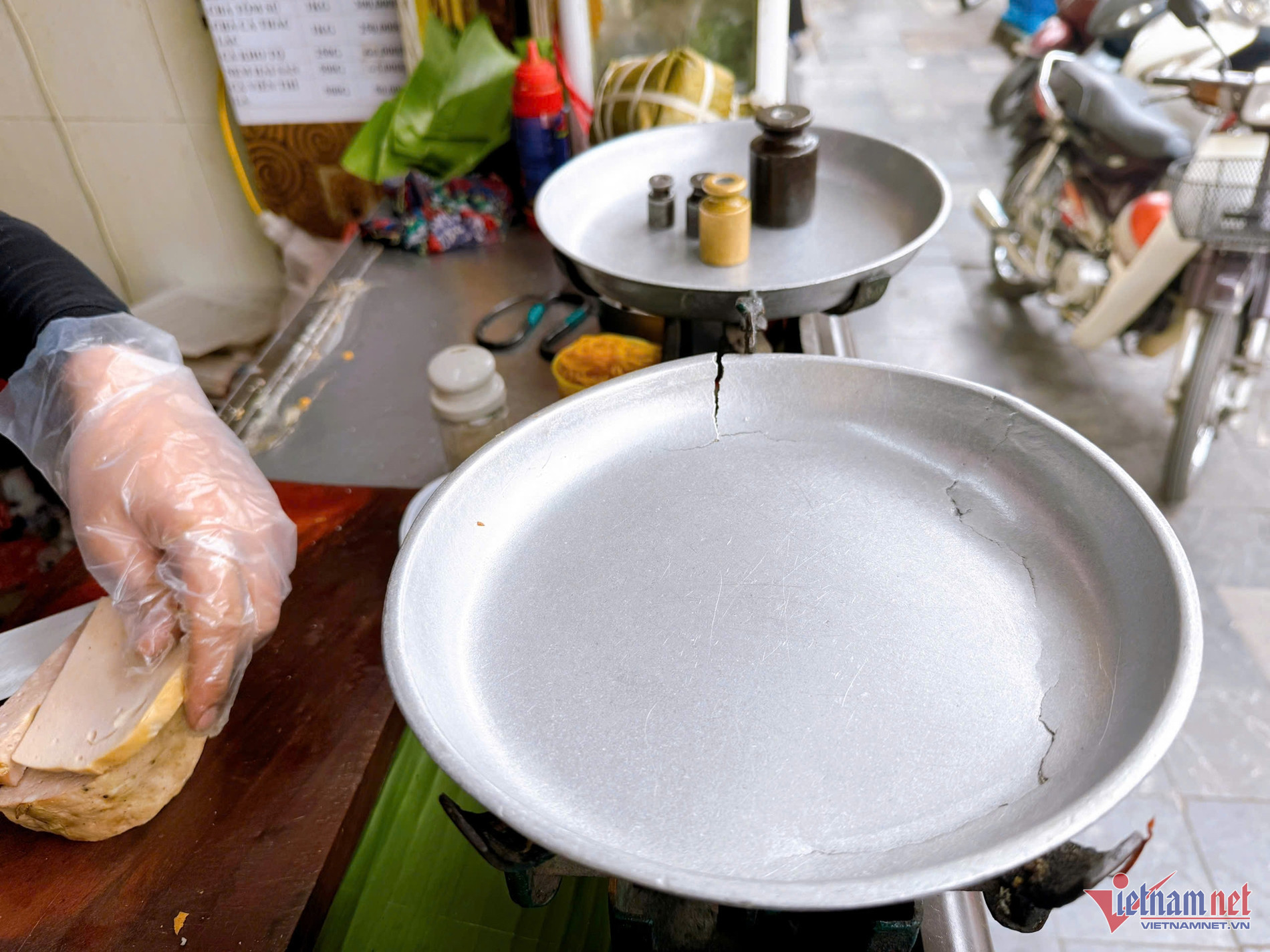Famous not only for its mouthwatering family recipes, a three-generation pork roll shop on Duong Thanh Street in Hanoi has become a must-visit spot for locals and tourists alike - partly thanks to its treasured antique: a hundred-year-old balance scale.
A secret recipe that keeps customers coming back

Located on the modestly sized Duong Thanh Street (Cua Dong Ward, Hoan Kiem District), the three-generation pork roll shop run by Nguyen Ly Tuan’s family is hard to miss.
A large menu board and bright signage mark its entrance, while a glass display case filled with a dozen varieties of pork rolls and side dishes commands attention from passersby.
According to Nguyen Ly Tuan, the family began selling pork rolls over 70 years ago. He and his two younger brothers represent the third generation carrying on the family tradition, with around 40 years of hands-on experience.
The entire family - seven siblings and their children - work tirelessly from morning to night to keep up with demand. Everyone has a role: slicing, grinding, pounding, grilling, wrapping. The most talkative member, however, handles direct customer sales.
The shop offers around 15 types of pork rolls, from classics like gio lua (Vietnamese ham), cha com (young green rice sausage), and cha mo (fatty pork sausage), to newer creations like beef roll, chicken roll, mushroom ear roll, and crab paste sausage. Prices range from 230,000 to 360,000 VND per kilogram (approx. USD 9 to 14).
In addition to pork rolls, the shop serves enticing sides like salt-steamed chicken, Chinese sausages, fermented pork, cheese sausages, and ham.
A best-seller rooted in tradition

Nguyen Thi Tam, the main vendor at the shop, says the most popular item is the marbled cha mo - a dish once considered a delicacy on traditional Hanoian dining tables.
To make the perfect marbled cha mo, only fresh, springy pork shoulder is used. The fat must come from the shoulder or neck to ensure a crispy texture. The fat-to-lean ratio must be exact - off by even 100 grams and the texture changes.
Meat is sliced thin and ground in a mortar kept cool with ice to retain its elasticity and prevent it from becoming mushy. After seasoning, it’s mixed with hand-diced lard.
Unlike other variants, the fat isn’t ground but diced into small cubes so that, when sliced, the sausage reveals a beautiful marbled pattern.
The roll is steamed in blocks, brushed with daylily extract for color, and then fried. “Perfect cha mo should have a soft, elastic interior with clear fat patterns, and a golden, slightly glossy, crispy exterior,” Tam explains.
Each sausage type has its own flavor, and all are carefully wrapped in green banana leaves and newspaper for an old-school touch.
A treasured heirloom and symbol of business integrity

Loyal customers often share stories about the shop’s cherished “heirloom”: a century-old balance scale used daily to weigh products for customers.
Despite owning several modern digital scales used behind the scenes, the family reserves this antique balance scale for customer-facing weighing.
Though the scale is now cracked, with faded weights and a dented aluminum tray, it still accurately measures dozens of purchases daily.
Why not use digital scales? According to Tam, they often malfunction under continuous use and become less accurate over time. The old balance scale, on the other hand, remains sturdy, precise, and symbolic of the shop’s trustworthiness.
Beyond function, the scale reinforces the family’s values, connecting generations and serving as a daily reminder of their commitment to transparency and quality.
The shop also preserves a complete set of metal weights, ranging from 5 grams to 500 grams, which are cleaned and carefully maintained every evening.
Thao Trinh